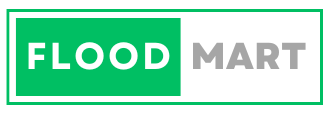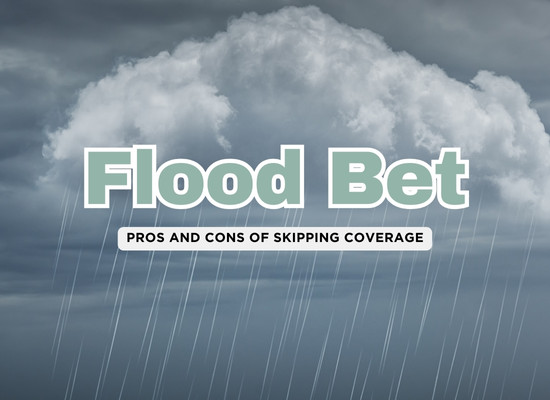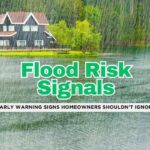When you live in a flood-prone area, the idea of skipping flood insurance might sound bold — or downright risky. Maybe you’ve crunched the numbers, or maybe you’re betting on dry seasons ahead. Either way, choosing not to carry flood insurance is a major financial decision, and it’s not all black and white. There are real reasons some people opt out — and serious risks that come with that choice. Here’s a balanced look at the pros and cons of going without flood insurance.
✅ Pro #1: You Save on Premiums
Flood insurance isn’t cheap, especially in high-risk areas where annual premiums can run into the thousands. By not paying for a policy, you keep that money in your pocket — month after month, year after year.
When it makes sense:
- You’re in a low-risk zone
- Your home is fully paid off
- You’ve got an emergency fund that could handle minor flooding
What to remember:
You’re gambling that the savings outweigh the potential loss. That might work for years — until it doesn’t.
✅ Pro #2: You May Qualify for Disaster Aid Anyway
In some major flood events, the federal government offers disaster relief and low-interest loans to help affected homeowners, even those without flood insurance.
When it makes sense:
- You believe major disaster declarations are likely
- You’re okay with loans (vs. full payouts)
- You don’t mind the paperwork and delay
What to remember:
FEMA aid isn’t guaranteed. It’s often a loan — and almost never enough to rebuild fully.
✅ Pro #3: More Financial Flexibility
Without flood insurance premiums to worry about, you can allocate your money where it matters most to you — paying off debt, making home improvements, or building your savings.
When it makes sense:
- You’re prioritizing other high-impact financial goals
- Your risk is genuinely low
- You’re disciplined about saving for emergencies
What to remember:
You’re trading peace of mind for freedom — and that works only if you stay financially prepared.
✅ Pro #4: You Control the Risk Strategy
Some homeowners choose to raise their homes, install drainage systems, or landscape for water diversion — all proactive ways to reduce flood risk without paying into an insurance pool.
When it makes sense:
- You’re a hands-on homeowner
- You’ve made significant flood-proofing investments
- You’re confident in the mitigation measures
What to remember:
Even with great prep, nature doesn’t play by your rules — and the first big storm can test everything.
✅ Pro #5: It Might Never Flood
Let’s be honest — some people roll the dice, and it works. If you’ve lived in the same home for 30 years and never seen more than a puddle, skipping flood insurance may feel like the logical move.
When it makes sense:
- Your area has a historically dry record
- You’re comfortable accepting the risk
- You’ve priced out what worst-case repairs would cost
What to remember:
Just because it hasn’t flooded doesn’t mean it won’t. Weather patterns change, and so do flood maps.
Now it’s time for the CONS
❌ Con #1: One Flood Can Wipe You Out
Without insurance, you’re on your own for cleanup, repairs, and replacing everything that gets destroyed. Flood damage can cost tens or even hundreds of thousands — and it happens fast.
Why it’s risky:
- A few inches of water can ruin walls, flooring, and furniture
- Mold sets in quickly and costs even more to fix
- Your entire savings — or more — could be gone overnight
❌ Con #2: You Might Not Be Eligible for Aid
Many homeowners assume FEMA will step in. But if the flood isn’t part of a federally declared disaster, or if your home isn’t considered a primary residence, you might get little to no help.
Why it’s risky:
- FEMA support is limited and selective
- You could end up waiting weeks for minimal aid
- There’s no guarantee you’ll qualify at all
❌ Con #3: Buyers May See It as a Red Flag
If you plan to sell your home, not carrying flood insurance could make potential buyers nervous — especially if they know the area has any history of flooding.
Why it’s risky:
- You may lose buyer trust
- Buyers might demand discounts or flood inspections
- Your home could sit on the market longer
❌ Con #4: You’re On the Hook for Liability
If floodwaters cause damage beyond your property — like pushing debris into a neighbor’s yard or creating a hazard — you could be liable, especially if your property wasn’t maintained.
Why it’s risky:
- Legal issues can get expensive fast
- Insurance won’t step in to help
- You’re exposed to both cleanup and compensation costs
❌ Con #5: You Could Lose Everything
This is the big one. Without insurance, a major flood can leave you with an unlivable home, no financial safety net, and nowhere to turn — especially if you’re also dealing with job loss or medical bills.
Why it’s risky:
- Rebuilding costs can easily exceed six figures
- Personal belongings and memories may be gone for good
- You may be forced to relocate permanently
🌧️ Risk vs. Reality
Choosing not to carry flood insurance isn’t necessarily reckless — but it does come with serious trade-offs. For some, it’s a calculated financial decision. For others, it’s a costly gamble waiting to happen. The key is to go in with your eyes wide open, fully understand your risk, and have a plan if the waters rise.



